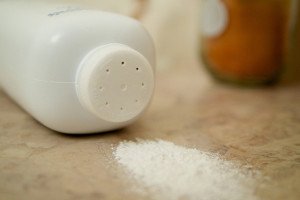A US court has ruled that healthcare product company Johnson & Johnson are to pay out NZ$108 million in damages to the family of a woman who died from ovarian cancer.

Alabama woman Jackie Fox was a lifetime user of talcum powder for feminine hygiene and developed ovarian cancer in 2013. She died in October at age 62. A jury decision in St Louis, Missouri, this week found Johnson & Johnson liable for fraud, negligence and conspiracy, as they had not revealed to customers the potential risks of using talcum powder, including ovarian cancer.
According to Cancer Research UK, the evidence that talcum powder use is linked to ovarian cancer is not very strong. They note that while some studies have seen “a modest increase in the risk of ovarian cancer in women who use talc on their genitals, the evidence isn’t completely clear.”
Speaking to Newshub, University of Auckland cancer expert Prof Andrew Shelling, said users of talcum powder should not be concerned.
“Talcum powder comes up every few years and then dies away again. The evidence is very weak, it wouldn’t stand the scrutiny of most scientists – so I’m surprised that is has passed in a court of law in America,” he said.
Carol Goodrich, a Johnson & Johnson spokeswoman, said to Reuters: “We have no higher responsibility than the health and safety of consumers, and we are disappointed with the outcome of the trial. We sympathize with the plaintiff’s family but firmly believe the safety of cosmetic talc is supported by decades of scientific evidence.”
The case has been widely covered in New Zealand media. Examples include:
Newshub: Johnson & Johnson to pay $108M in cancer case
New Zealand Herald: Johnson & Johnson says talcum powder’s safe despite $100m payout over cancer death
Stuff.co.nz: Studies mixed on link between talcum powder and ovarian cancer
RNZ: Johnson & Johnson talc in $72m cancer case
Stuff.co.nz: Talcum powder has been linked to cancer – here’s what you need to know
MSN NZ: J&J must pay $72 million for cancer death linked to talcum powder
Stuff.co.nz: Johnson & Johnson ordered to pay $108 million in US talcum powder cancer case
Our Colleagues at UK Science Media Centre collected the following expert commentary:
Prof Paul Pharoah, Professor of Cancer Epidemiology, University of Cambridge, said:
“In my view the decision of the court is flawed for two reasons. First, the evidence of a causal association between genital talc use and ovarian cancer risk is weak. Second, even if the association were true, the strength of the association is too small to be able to say on the balance of probabilities that any cancer arising in a woman who used talc had been caused by the talc.
“Around 7,000 women are diagnosed with ovarian cancer in the UK each year. This makes ovarian cancer the 5th most common cancer in women, after breast, lung, bowel and womb cancer. Not all ovarian cancer is the same. There are several different types of ovarian cancer – serous, endometrioid, clear cell and mucinous being the main ones – and these have different risk factors and clinical features.
“The main risk factors are hormone replacement therapy use, being overweight, and having endometriosis. Smoking is associated with one of the rarer types of ovarian cancer – mucinous ovarian cancer. There are several genetic variants that are associated with an increased risk. Faults in the BRCA1 and BRCA2 genes in particular are associated with high risks.
“The use of the oral contraceptive pill during early adulthood is associated with a 50 per cent reduction in risk of ovarian cancer that persists many years after stopping the pill. Pregnancy and breast feeding are also associated with a reduction in risk, as is tubal ligation (a form of sterilisation commonly referred to as having the tubes tied).
“A possible association between talcum powder use and risk of ovarian cancer has been reported for many years. This association was based on case-control studies, which are rather prone to bias. A recent multi-study collaborative analysis of over 8,000 cases and 9,000 controls found that perineal talc use was associated with a 20% increase in the risk of ovarian cancer. There was no difference in the risk of the different types of ovarian cancer.
“Prospective studies are less prone to bias than case-control studies, though they are not bias free. There have been two prospective studies investigating this association. One found a significant association with risk of the serous type of cancer, and the other found a non-significant increase in risk of the serous type of ovarian cancer. The results of both these studies were compatible with the 20% increase in risk reported by case-control studies.
“The association is biologically plausible. Talcum powder applied to the genital area might get into the fallopian tubes and onto the ovaries and cause inflammation, which in turn could cause ovarian cancer.
“On balance, I think that it is more likely than not that there is an association between genital talc use and risk of some types of ovarian cancer, however it’s important to remember the size of the possible risk – a 20 year old woman in the UK has a risk of getting ovarian cancer at some point in her life of 18 in a thousand; a 20% increase in this risk would raise this to 22 in a thousand (assuming that the association were real). A woman with a fault in the BRCA1 gene has a lifetime risk of ovarian cancer of about 400 in a thousand.”
Declared interests
Prof Paul Pharoah: “I receive research funding from Cancer Research UK and the National Institutes of Health to fund my research programme in ovarian cancer.”